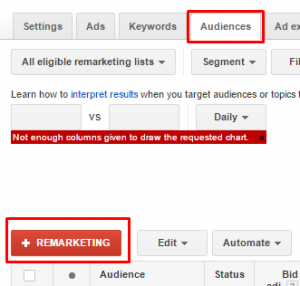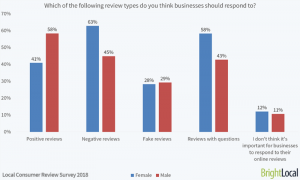Don’t forget to download the MarTech Replacement Survey.
Good morning, Marketers, and people are talking about the Replacement Survey.
Welcome back from the long weekend — and if you don’t know about the MarTech Replacement Survey you can learn more about it below.
Meanwhile, it’s been a topic of conversation. Scott Brinker pointed out that the main reasons for replacing marketing technology solutions was what he calls “aggregation and integration.” In other words, enhanced data capabilities and good fit with the rest of the stack. This prompted a LinkedIn discussion in which Jonathan Althausen highlighted another statistic. He said it was “interesting” that only 29% cited security as a reason for change.
Said Brinker, “‘Interesting’ is one word for it. ‘Disappointing’ is another. For me, I think only 23% citing compliance is perhaps more disappointing. But as for security, the low score might reflect that the survey was being taken by marketing rather than by IT.
Kim Davis
Editorial Director
The case for Digital Asset Management
In his latest contribution, Real Story Group’s Jarrod Gingras systematically surveys the reasons a marketing organization might need a solution to organize its digital assets. “In an era of visual story-telling, managing digital assets is no longer a ‘nice to have’ but a ‘must have’ for digital marketing,” Jarrod writes. “Yet even today the rapid growth of digital media-driven experience needs can catch enterprises by surprise, and martech stack leaders often bear the burden of absent asset management services in their stack.”
One problem is that the decision-makers when it comes to budget allocation often don’t understand the value of a DAM solution. The amount of time wasted trying to retrieve assets and the amount of money wasted re-creating them just might not be obvious. In fact, there are three rationales for getting assets in order: Reduce costs and risks; generate new revenue opportunities; and improve market or brand perception and competitiveness.
Still think you don’t need a DAM? Take Jarrod’s test. He sets out 20 challenges. If your team fails at more than eight of them, guess what you probably need.
MarTech Replacement Survey finds marketing transformation is accelerating
This year’s edition of the MarTech Replacement Survey is free to download and requires no registration.
The first MarTech Replacement Survey in 2019 showed just how frequently marketing organizations replaced technology. The survey found homegrown platforms were often displaced by commercial, out-of-the-box applications. This had a direct effect on hiring, as most respondents said they had recruited new teams to run the platforms they were installing.
Since then, the COVID-19 pandemic has gripped the world, forcing us more closely to embrace digital operations. We know that many digital-first businesses thrived during the pandemic, but questions remained about how the disruption of the past year-and-a-half affected marketing technology decisions.
This year’s report, the result of a survey fielded through April and May of 2021, answers several of those questions.
Of the 374 marketers who answered our survey, 252 told us they replaced a marketing technology application in the past year, representing 67% of respondents. For the most part, organizations were upgrading from one commercial solution to another — and the upgraded solutions were exactly the kinds of technologies you’d expect given how digital transformation picked up during the pandemic.
MarTech is just 7 days away
Following his keynote, “From big data to big ops,” Scott Brinker will be closing the opening day of MarTech with a live presentation of the latest Stackie Awards. He’ll be selecting and showing examples of how marketing technology stacks can be represented graphically, and there are always some surprises.
Join us for that as it happens at 5.25pm EST on September 14th.
MarTech. It’s all yours. And it’s all free. Secure your pass now.
Don’t miss this opportunity to join thousands of senior-level marketers to learn how to make data-driven decisions that power organizational success.
Psst… Hungry for more? Expand your training with a live, deep-dive workshop on agile marketing, buying technology, customer experiences, CDPs, and attribution analysis — just $ 149 each. (Buy more than one to unlock 15% off registration!)
When your biggest clients don’t heed your warnings
Banksy’s web administrators were warned about a security issue in the site — and then a few days later hackers scammed a buyer out of $ 336,000.
“On Tuesday a piece of art was advertised on Banksy’s official website as the world-renowned graffiti artist’s first NFT (non-fungible token). A British collector won the auction to buy it, before realising it was a fake. A cyber-security expert warned Banksy that the website could be hacked, but was ignored,” said Joe Tidy for the BBC.
This seems to be an age-old issue with development and marketing. Marketers make critical recommendations to our clients and stakeholders. We tell them what could happen if they do nothing. Only some (or none!) of the recommendations are implemented. And what we said would happen… happens.
The hope is that they take heed before something bad happens, but if not, that we can get them on board and help them fix it afterward, at a minimum. But if you’re feeling frustrated, just know that even Banksy doesn’t take every recommendation.
Quote of the day
“Customer Experience is NOT about controlling the customer.” Anand Thaker, strategic executive advisor
The post Transformation is accelerating: Tuesday’s Daily Brief appeared first on MarTech.
MarTech(36)








